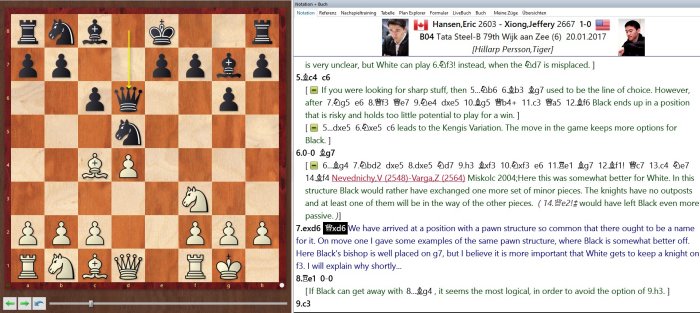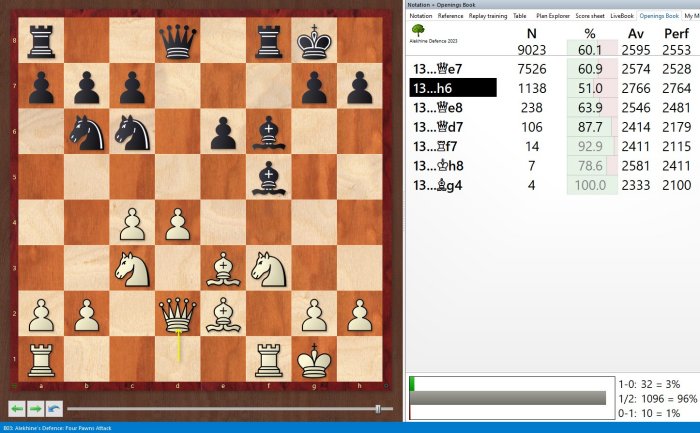The Alekhine (1.e4 Nf6) is a rare guest in general and especially at a high-level. During the pandemic, however, this daring opening has been employed on several occasions, notably by the World Champion Magnus Carlsen. A faster time-control and perhaps the unusual atmosphere created by online games probably helped some players unleash, from time to time, a marginal opening to surprise their opponents.
The Alekhine revitalised
The Alekhine (1.e4 Nf6) is a rare guest in general and especially at a high-level. During the pandemic, however, this daring opening has been employed on several occasions, notably by the World Champion Magnus Carlsen. A faster time-control and perhaps the unusual atmosphere created by online games probably helped some players unleash, from time to time, a marginal opening to surprise their opponents.
Playing the Alekhine on a regular basis is quite demanding, not to say a bit foolish. Not that this provocative opening is bad, but some paths have been established where White can more easily claim a slight advantage out of the opening than against a more classical opening. This also means that the surprise-effect will be greater, particularly at speed-chess, an insufficiently-prepared opponent will find it hard to find the best replies. In this video course we will discuss some fashionable lines, still unexplored 3 or 4 years ago, like the astonishing piece-sacrifice in the well-known Voronezh Variation : 1.e4 Nf6 2.e5 Nd5 3.d4 d6 4.c4 Nb6 5.exd6 cxd6 6.Nc3 g6 7.Be3 Bg7 8.Rc1 0-0 9.b3 d5 10.c5 e5!? In some correspondence games Alekhine devotees have used the now trendy fianchetto-approach vs 1.e4 Nf6 2.e5 Nd5 3.d4 d6 4.Nf3, achieving fairly decent results. The impression that White can’t easily extract an opening edge was validated afterwards by over-the-board practice.
• Video running time: 5 hours 17 minutes
• With interactive training including video feedback
• Extra: Model games database & Training with ChessBase apps - Memorize the opening repertoire and play key positions against Fritz on various levels
Alekhine Defence Powerbase 2023
The 414 selected annotated games offer excellent material for study. The database includes annotations by Anand, Giri, Sasikiran und Sutovsky, but the lion’s share has been analysed by our Alekhine Defence expert Alexander Finkel (191 games). There is a total of 3723 games with a rating average of at least 2500 (apart from games with annotations or played by Alekhine Defence experts Bortnyk, Baburin and Varga).

A double click on the database loads the overview of the games. A further double click loads the relevant game. The tab Players lets you sort the games by frequency (with the tab Total). Olexandr Bortnyk heads the list with 428 games, followed by Zoltan Varga (237) and Alexander Baburin (184).

The games can be played through or further investigated with an engine or a powerbook.
Ajechin Defence Powerbook 2023
For the 87,000 games from the engine room of playchess.com and 18,000 games from the Mega 2023 and the Correspondence Database 2022 respectively, an opening average of at least 2300 was taken as a basis. The result is a small special book that allows meaningful statistics about an opening that doesn't equalise 100 per cent but is excellent for countering.
The four-pawn attack used to be regarded as a rebuttal attempt to the Alekhine Defence. The following diagrammatic position arises after the moves 1.e4 Nf6 2.e5 Sd5 3.d4 d6 4.c4 Nb6 5.f4 dxe5 6.fxe5 Nc6 7.Be3 Bf5 8.Nc3 e6 9.Nf3 Be7 10.Be2 (the sharp 10.d5 is according to engine analysis =) 10...0-0 11.0-0 f6 12.exf6 Bxf6 13.Qd2

and now the continuation 13...h6 (mostly followed by 14.Rad1 Qe8) has excellent statistics.




